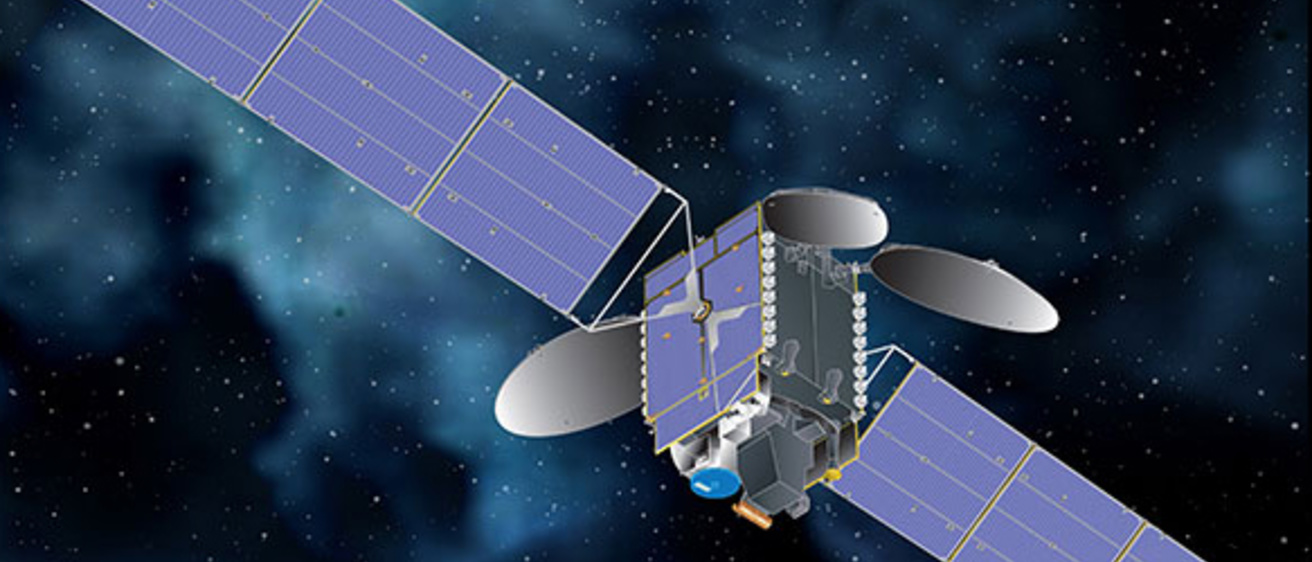University of Iowa researchers specializing in atmospheric sciences were selected to aid NASA’s TEMPO mission that’s set to launch this year. TEMPO (Tropospheric Emissions: Monitoring Pollution) is intended to revolutionize air quality forecasting.
Jun Wang, a UI professor of chemical and biochemical engineering, plans to use data collected from TEMPO to improve algorithms for measuring aerosol optical centroid height (AOCH) and aerosol optical depth (AOD). The information would benefit regional air quality monitoring and support public health management in smoky conditions.
“Previously, what we could get from space is the AOD that shows the total amount of aerosol mass from the surface all the way to the top of the atmosphere,” Wang said. “However, what matters most is the amount of aerosols in the air we breathe at surface. AOCH data will be used to provide aerosol vertical distribution information, which will help us to map air quality.”
TEMPO is a space-based ultraviolet and visible spectrometer scheduled to be launched into space aboard a commercial satellite before the year is over.
According to NASA, TEMPO will be the first space-based instrument to monitor major air pollutants across North America every daylight hour at high spectral resolution. TEMPO will monitor daily variations in ozone, nitrogen dioxide, and other key elements of air pollution from the Atlantic to the Pacific, and from Mexico City and the Yucatan Peninsula to the Canadian oil sands.
Wang was selected as the principal investigator for two related NASA grants worth $1.56 million tied to the mission. Wang holds titles of assistant director of the Iowa Technology Institute, a research arm of the College of Engineering, the James E. Ashton Professor of Engineering, and director of the Atmospheric and Environmental Research (AER) Lab at ITI.
NASA is sponsoring a $1.1 million project to enhance and enrich the TEMPO mission by providing an interactive online mapping system to provide decision support for collaborators on air quality forecast and public health management. NASA is also supporting a $460,000 grant to develop an aerosol height product from the Earth Polychromatic Imaging Camera (EPIC) onboard the Deep Space Climate Observatory (DISCOVR) spacecraft, which is 1 million miles away from Earth.
“After about 10 years of planning, the TEMPO satellite mission is currently scheduled for launch by the end of this year," Wang said. "This project will enrich TEMPO’s application to help better observe and forecast the quality of air we breathe at the surface.”
Dr. Xi Chen, a postdoctoral researcher in the AER lab, will serve as a co-investigator on the project to develop an aerosol height product. Co-investigators for the project to develop an interactive mapping system include Xiong Liu, physicist with the Harvard Smithsonian Astrophysical Observatory; Melanie Follette-Cook, assistant research scientist at Morgan State University; and Daven Henze, associate professor of mechanical engineering at the University of Colorado-Boulder. The project will also collaborate with local environmental quality and public health agencies in California, Maine, Colorado, and Oklahoma, as well as the Lake Michigan Air Directors Consortium based in Chicago.
